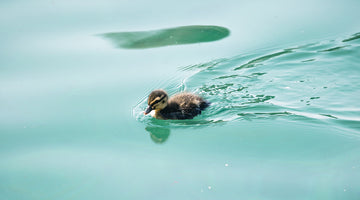Fun facts about animal pregnancies

We often explain the concept of reproduction to kids as “the birds and the bees”. But why? How is animal pregnancy different from human pregnancy? We’ve laid out 7 fun facts about different pregnant animals below.
Elephants are pregnant for 2 years
9 months of pregnancy feels like a lifetime, can you imagine 24?! Elephants are born with advanced levels of brain development and have the longest-known gestation period of any animal. Not only that, but elephants have the longest menstrual cycles, lasting 13-18 weeks. Finally, as if baby elephants weren’t cute enough, they tend to suck on their trunks like human babies suck on their thumbs.
Orangutans nurse for 6 years
This is 20% of their lives and longer than any other primate. Orangutans do this because of changing environments in the rainforest climate and unpredictable food supplies. Oftentimes, they keep feeding solely on comfort and instinct and don’t even need the milk anymore.
Giraffe's fall 6 feet at birth
What a way to cut the umbilical cord. This might seem scary, but the 6 foot fall effectively breaks the amniotic sack and helps the calf take its first steps. Giraffes give birth standing up and the newborn calf weighs 100-150 pounds at birth.
Spiders can choose which sperm to use
Wouldn’t this be nice? After the male spider inserts his sperm into the female spider’s genital, the female spider gets to pick which sperm she uses to fertilize her eggs. Another fun spider fact: most female spiders immediately eat and kill the male spider after mating.
Octopus mothers die after their eggs hatch
Female octopus are quite literally born to be mothers. Known as semelparous animals, female octopuses reproduce once and then die. Once her eggs hatch, the mother stops eating and eventually passes away.
Kangaroos have 3 vaginas
You heard us. 3. They also have 2 uteruses. Who knew kangaroo genitals could be so interesting? Two side vaginas for the sperm to collect, and one in the center for a baby to come out of and into her pouch.
Male seahorses give birth
Finally, a male species that understands what childbirth is like. Outdoing human fathers, male seahorses can carry up to 2,000 babies at a time in a pouch they have on their stomachs. Luckily for them, their pregnancies usually only last for 10-25 days. 2,000 babies in 10 days? What a turnaround.
As you can see, no animal reproduces quite the same. The same goes for humans. Everyone has a different pregnancy experience and no matter what yours looks like, Winx Health (formerly known as Stix) is here every step of the way. For answers to all health questions, check out the Winx Health Library or order a test today.
Keep Reading

Trump just rolled back emergency abortion protections: here’s what you need to know
Jun 4

Understanding ovulation with a holistic hormone coach
May 28

It's about time we took IUD pain seriously
May 19








